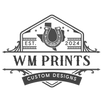3D printing has revolutionized the way we create and innovate, offering endless possibilities for everything from prototyping to crafting intricate designs. However, once you have your 3D printed object in hand, post-processing becomes an essential step to elevate it to the next level.
In this blog post, we'll explore some efficient post-processing tricks that can enhance the quality and appearance of your 3D printed creations. Whether you’re a hobbyist or a professional, these tips will ensure your projects have a polished and professional finish.
1. Cleaning Up Support Structures
Most 3D prints with complex geometries require support structures. Once removed, these structures can leave imperfections or excess materials around the print. A simple and effective way to clean these areas is by using precise tools that provide control and accuracy. For example, the Lyman Type Prep Tools Holder offers a convenient solution to organize and access your cutting and trimming tools effectively. By keeping your tools neatly arranged, you can work more efficiently on refining your prints.
2. Smoothing Surfaces
Layer lines are a common characteristic of FDM (Fused Deposition Modeling) prints, and smoothing these lines can significantly enhance the tactile and visual appeal of your object. Some effective techniques include:
- Sanding: Start with a coarse grit and gradually move to finer sandpaper. This can be tedious but results in a very smooth surface.
- Chemical Smoothing: For certain materials like ABS, acetone vapor smoothing is a method that can achieve a glass-like finish.
3. Painting and Finishing
Once the object’s surface is prepared, adding color or a protective coating can bring the design to life. Acrylic paints are commonly used for their wide range of colors and easy application. For a more resilient finish, consider using a clear spray-on varnish which not only protects your print but also adds a professional sheen.
4. Bonding Parts
When creating large or complex objects, you may need to print in sections and bond them together. Choosing the right adhesive is crucial for a solid and seamless connection. Always test your adhesive on a small area to ensure compatibility with your filament material.
By adopting these post-processing techniques, you can transform your 3D printed designs from good to phenomenal. Whether your goal is to improve functionality or aesthetics, the right approach to finishing can make all the difference.
For more tips and tools to enhance your 3D printing experience, visit WM Prints.
Happy printing!





